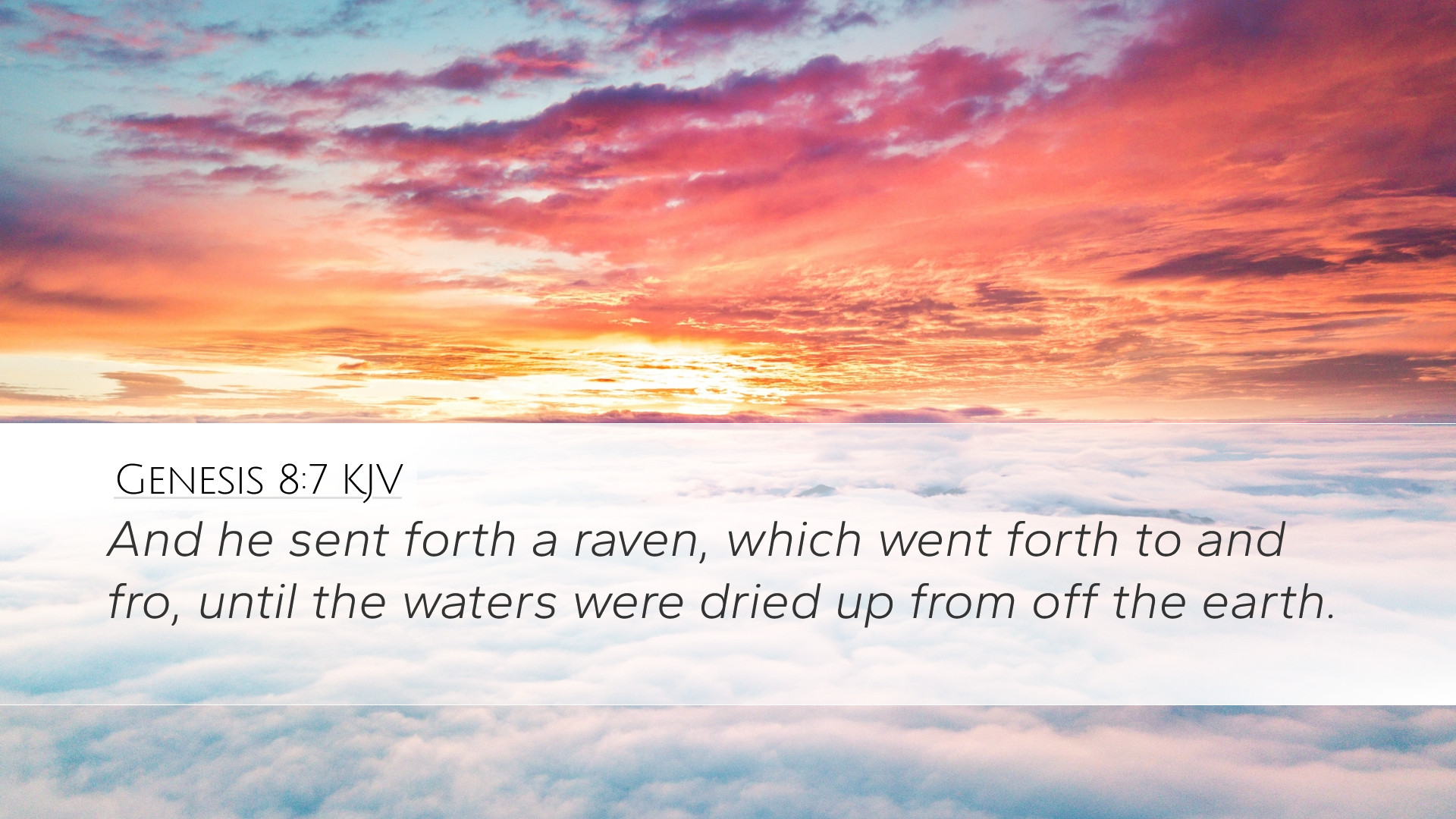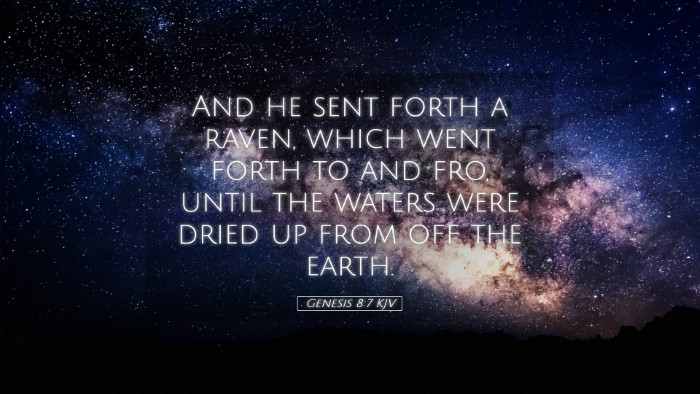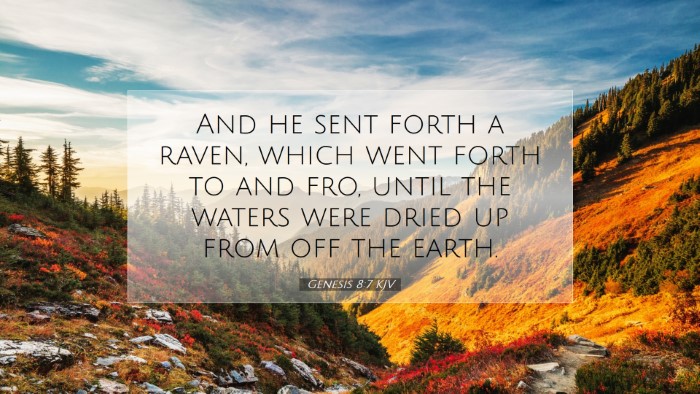Genesis 8:7 Commentary
Verse: "And he sent forth a raven, which went to and fro, until the waters were dried up from off the earth."
Genesis 8:7 marks a significant moment in the narrative of the Flood—a pivotal transition from judgment to restoration. In examining this verse, we draw from the insights of several public domain commentaries to deepen our understanding.
Contextual Background
The Flood narrative in Genesis is not merely a story of judgment but also one of new beginnings. Following the destruction brought upon the earth, Noah finds himself in a unique situation as the sole remnant of humanity. The sending forth of birds from the Ark, particularly the raven, symbolizes the search for hope amid desolation.
The Raven's Role
Matthew Henry emphasizes the raven's nature—being an unclean bird—suggesting that it represents the remnants of judgment. The raven, unlike the dove, does not return with evidence of hope, reinforcing the sense of desolation. The raven's ability to feed on carrion exemplifies a harsh reality; it thrives amid death rather than life.
Albert Barnes views the raven as a creature that goes "to and fro" in its search, highlighting the restless nature of humanity and its incessant pursuit of life even after catastrophe. The raven’s lack of return signifies the absence of a suitable place for life, embodying a world yet to be reborn.
The Symbolism of Flight
In Adam Clarke's commentary, the act of sending the raven forth has a dual significance. The raven's flight can be seen as a metaphor for the human spirit's desire to seek freedom and the inherent tension between destruction and the hope of restoration. The bird flying "to and fro" also hints at a chaotic return to normalcy—a theme that resonates with many post-exilic texts in Scripture.
The Meaning of 'Going To and Fro'
The phrase "went to and fro" suggests a thorough exploration of the environment. It indicates a search that is not passive but active and filled with uncertainty. Matthew Henry comments on how this demonstrates the persistence of life’s struggles following trauma. Often, Christians today find this imagery relatable, symbolizing their journeys through trials and searches for direction.
Theological Implications
This verse invites theological implications concerning divine grace and human perseverance. As identified by Henry, while the raven searches incessantly, it does not convey a message of hope. In contrast, the subsequent sending of the dove (in the following verses) represents peace and the assurance of God's covenant—showing a progression from despair to hope.
- Judgment: The raven embodies the judgment of God that has devastated creation.
- Hope for Restoration: The search for life amidst destruction embodies the broader narrative of redemption found throughout Scripture.
- Human Response: The act of seeking (as displayed by the raven) reflects humanity's response to calamity, indicative of both despair and hope.
Lessons for Contemporary Readers
For modern pastors and theologians, Genesis 8:7 emphasizes the urgency of seeking truth and direction during tumultuous times. Just as Noah sent forth the raven, leaders today must guide congregations through uncertainty with faith and discernment.
Reflective Points:
- How do we discern between the symbols of life and death in our own spiritual journeys?
- What does it mean to search for hope within our communities and personal lives despite the trials we face?
- How can we effectively communicate the reality of God’s judgment while offering the hope of redemption?
Conclusion
Genesis 8:7 serves as a poignant reminder of the complexities following divine judgment. The raven's flight encapsulates themes of uncertainty, search for life, and hints at the human condition that resonates through our spiritual struggles today. In contemplating this narrative, pastors, students, and scholars are invited to explore the multifaceted relationships between judgment, hope, and the redemptive plan of God that unfolds in the subsequent verses.


